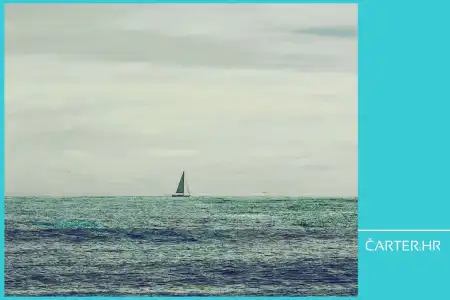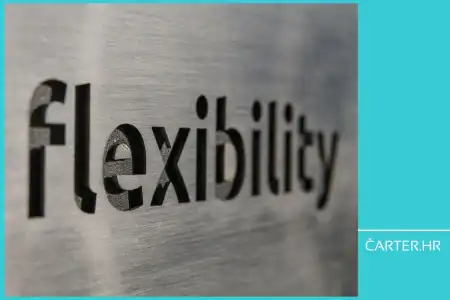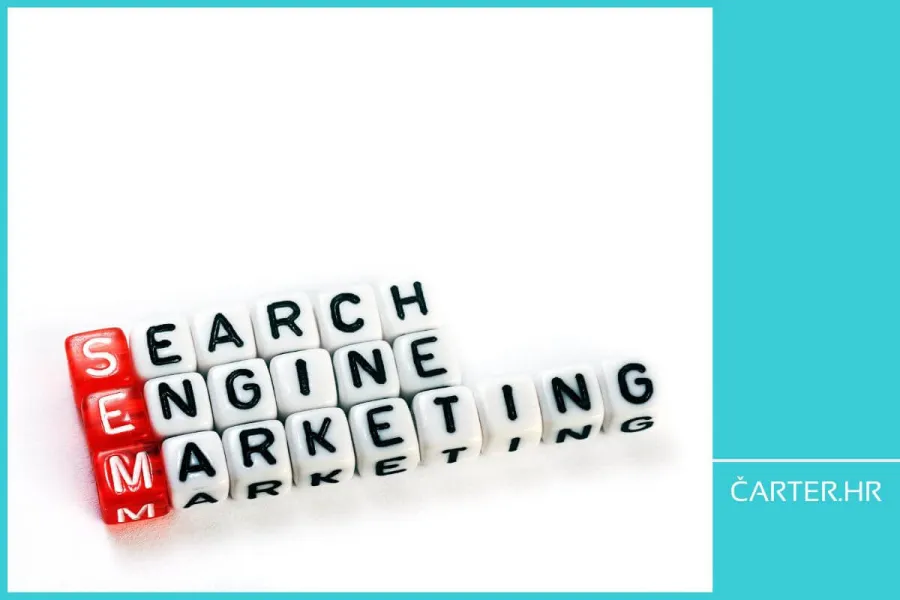
Search Engine Marketing (SEM) is a great marketing tool and your first line of communication with potential guests. With SEM, your ads appear at the top of search engines like Google, with instant visibility and a direct connection to your target audience. Do you want better ads and more efficient SEM campaigns? Find out how.
Imagine being able to "serve" vessels from your fleet to precisely those people who are looking for exactly what your yacht charter offers.
You can do it; SEM (Search Engine Marketing) will do it for you.
The main advantage of SEM is its ability to generate results quickly.
People frequently ask about the distinction between SEM and SEO.
The difference between Search Engine Marketing and Search Engine Optimization lies in their approaches and speed of results.
While SEO optimizes your website and content for organic growth on search engines (which can take months), SEM works quickly.
While SEO takes patience and time, SEM allows you to stand out instantly, using paid ads to drive traffic and conversions.
And while Search Engine Marketing initiates contact with potential guests "at the top of the page," Search Engine Optimization builds and maintains that contact over time.
Both strategies are essential, but if speed is more important to you, SEM is better.
Why Search Engine Marketing is important for yacht charter companies
The yacht charter industry is one of the most competitive. But standing in line with the competition is not enough.
You need to stand out, and SEM does just that—it instantly gives people what they're actively looking for and offers it to them.
Last year's statistics say that over 80% of people consider it important to be able to book their trip entirely online.
By the way, when planning where and how to spend their vacation, people spend an average of over 5 hours researching on the Internet. Additionally, they plan their vacation and research options an average of 45 days before they even make a booking.
(It is also good to know that more than 75% of people who travel find their inspiration for choosing a destination on social networks.)
(Source: Global Trends Survey)
Because booking periods and tourist seasons fluctuate, SEM marketing enables advertising campaigns to be adjusted. For example, you can boost the campaign during periods when demand is at its peak.
In addition, different regions attract different types of guests, which means targeting needs to be precise—something SEM excels at.
The advantages of SEM marketing and its targeted advertising are as follows:
- Increased visibility: Your ads appear above the standard search results, increasing the chances of potential guests noticing you.
- Quick adaptation: You can quickly change and optimise campaigns based on current needs or trends.
- Precise targeting: The ability to target according to location, interests, previous behavior, etc., which means that ads are seen by those who are really interested.
- Measurable results: Every click on the ad is recorded, enabling a detailed analysis of the campaign's success.

The basic components of a successful SEM campaign
Every click on an ad must lead to a decision, so you must approach the Search Engine Marketing campaign strategically and optimize your resources.
You will do this best with:
- By choosing the right keywords
- By writing effective ads
- By setting a budget and monitoring expenses
1. Choosing the right keywords is the foundation of any successful SEM campaign.
It's not just about choosing popular terms; it's about finding those that will best "hit" your target audience's wishes.
Think: Which keywords reflect the specifics of your offer?
If you offer luxury yachts, these could be keywords like "luxury yacht charter" or "exclusive yacht charter".
Tailoring keywords to your specific vessels, destinations, or services can significantly increase the quality and effectiveness of your ads.
2. The key to writing effective ads is creativity, but precision is also crucial in this context.
Your ads must be clear, concise, and attractive, with a clear call to action (CTA).
It is important to emphasise the unique advantages of your offer, whether it is free Wi-Fi on board or a crew with many years of experience.
A well-written ad is not just a text with which you will sell something; it is the first step in communication with your potential guests.
3. Setting a budget and tracking costs is the basis for maintaining control over your SEM campaign.
Determine your budget—how much you are willing to pay for each click, taking into account the potential return on investment.
You should constantly monitor and adjust your ads to ensure your investment pays off.
Tools like Google Ads provide detailed analytics, allowing you to see which keywords and ads are performing and which ones you can optimize or even eliminate.
Competition analysis and the yacht charter market
Understanding the yacht charter market and analysing the competition are two inseparable elements in any successful SEM campaign.
Do you want to stand out from the competition? Then, you need to know (and understand) what they do, how they do it well, and how they don't do it well.
How will you evaluate your competitors' SEM activities?
First, identify the key players in the market and what keywords they are using in their campaigns.
Tools like SEMrush or Ahrefs can give you insight into the ads your competitors are running, their position in search engines, and the amount they're willing to pay per click.
In addition to understanding the competition, you must also know and learn from industry best practices. This also entails knowing how to apply successful strategies to your campaign. But don't copy what the competition is doing.
You need to see what goes through them in order to adapt to yourself.
For example:
- Track keywords: Study your competitors' most effective keywords and ads to generate ideas for testing different approaches in your campaigns.
- Analyze Ads: To get inspiration for your ads, study the structure, copy, and CTAs of the most effective ads.
- Budget: Find out how much your competition is spending on specific campaigns so you can optimise your own budget.
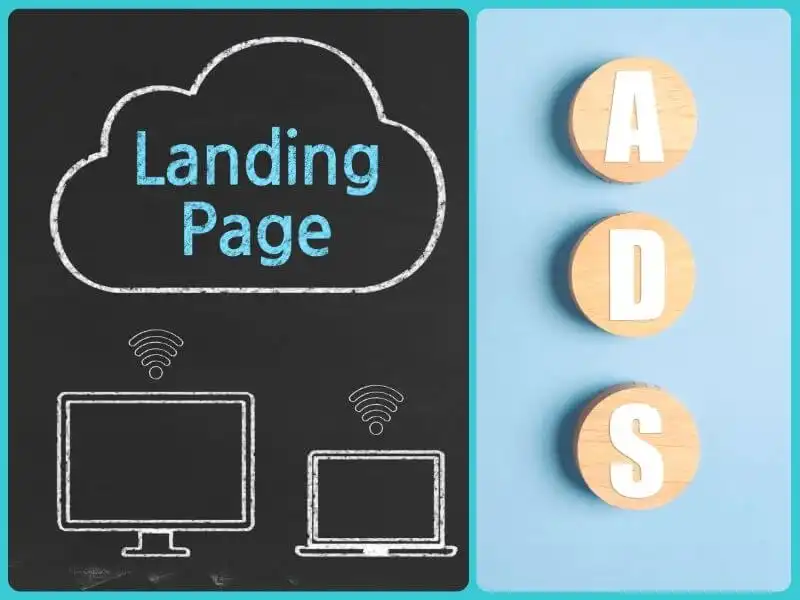
Optimisation of ads and landing pages
In SEM marketing, the first impression is often the only impression you can make.
You need to optimise ads and landing pages so that visitors click on your ad and take the desired action (thus, booking) on your page.
Why is a quality landing page so significant? Well, for conversions.
A good landing page must be clear, relevant to the ad visitors' clicks, and attractive enough to encourage them to take action.
For example, if your SEM ad promises an exclusive discount on a yacht charter, the landing page should clearly state the discount and explain how visitors can take advantage of it.
How do I make an ad that will attract attention?
- Match the ad and the landing page: If your ad talks about the luxury experience you offer on your vessels, then the landing page should reflect that luxury through design, images, and content.
- Clear calls to action (CTA): Visitors should know what is expected of them. If you want them to book a yacht charter, clearly highlight the call to action with a button that says "Book now".
- Testing different versions of your ad: Using A/B testing, you can compare different versions to see which ones "pass" and convert the best, of course. You might find that an ad with a picture of a yacht sailing into the sunset has a better click-through rate than an ad with a plain picture of a yacht in the marina.
Measuring the effectiveness of SEM campaigns
Measuring the effectiveness of SEM campaigns is crucial so you know if they are effective and that all the effort is not in vain.
The best way to know this is to use analytics tools, which will give you a clear picture of what's working and what's not.
Using analytics and reporting tools, you'll better understand how visitors react to your ads and the landing pages they link to.
Google Analytics, for example, can track where visitors come from, what keywords attract them, and how long they stay on your site. With this data, you can optimise the campaign and adjust it in real time.
The key performance indicators (KPIs) that you need to monitor are as follows:
- Conversion rates: What percentage of visitors who click on your ad take the desired action, such as booking or making an inquiry?
- Cost per acquisition (CPA): How much it costs you to acquire one customer through an SEM campaign
- Return on investment (ROI): Financial benefit obtained in relation to the amount invested
- Click-through rate (CTR): The percentage of people who click on your ad after seeing it. (A high CTR indicates that your ads are relevant and attractive to your audience.)
If you notice that some ads have a low click-through rate, you can optimise, adjust, or redesign them to be more attractive to increase their CTR.
If the analysis shows that some keywords are generating a high CPA, it may be beneficial to reduce your investment in those keywords and focus on more profitable options.
By testing different versions of your landing pages, you can identify which elements visitors prefer and which lead to higher conversions.
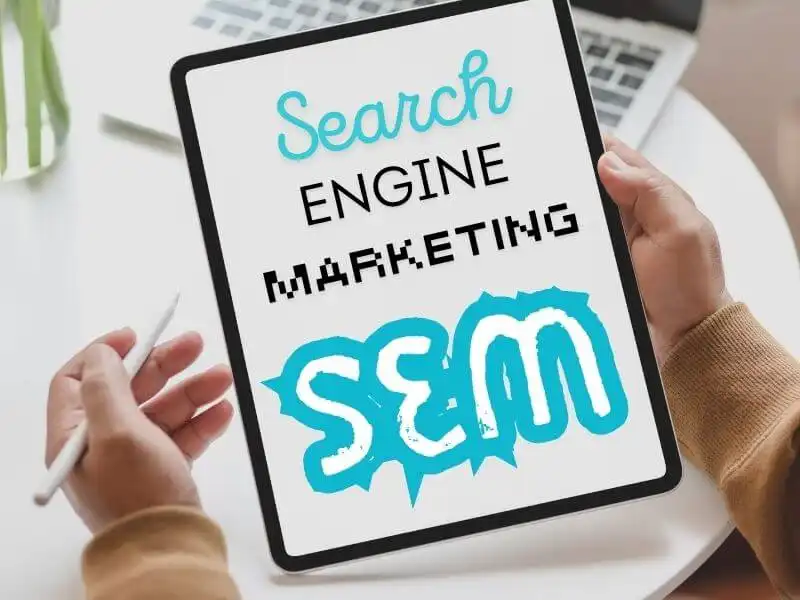
SEM strategies can enhance the success of your yacht charter business
With Search Engine Marketing, you increase your online visibility and attract a specific audience—one that is already actively looking for yacht charter services.
If you are a yacht charter company that wants to expand your reach and increase the number of reservations, the moment to invest in SEM was just yesterday.
Considering that more and more people are searching and booking their vacations online, SEM is a direct way to highlight your offer exactly where your future guests spend their time—on search engines.
And that's why you should use specific keywords, create ads that communicate the value of your service, and optimise your landing pages for the best possible conversion.
Don't forget retargeting to attract those who have already shown interest but haven't booked!
SEM is an excellent strategy for improving your yacht charter company's business results, as well as a great way to stand out from the competition.
Do you want a stronger and more sustainable business model with SEM? Send us an inquiry, and we will create your best strategy.
Are you interested in yacht charter and nautical news? Remember to subscribe to our newsletter.
Follow us on our social networks, Facebook, Instagram, and LinkedIn.
Categories of trends
- News
- Sale
- Marketing
- SEO
- Web design
- Social media
- Technology
- Regulations
- Management
- Education
- Finances
- User experience
Newsletter
Sign up for the newsletter and receive the latest trends and tips straight to your inbox
